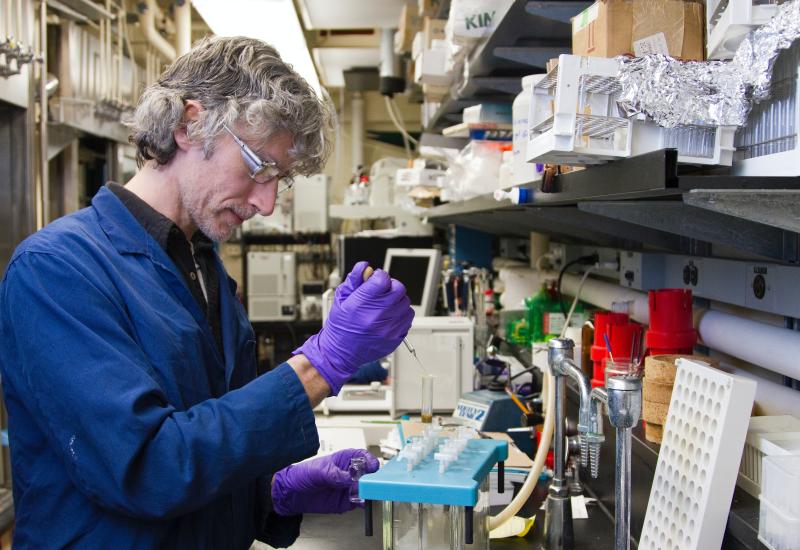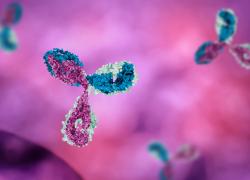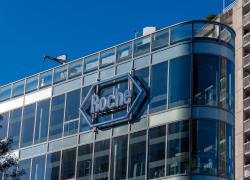
Zelgen’s DLL3 trispecific goes pivotal
A Chinese phase 3 of the biparatopic DLL3 T-cell engager alveltamig will start soon.
A Chinese phase 3 of the biparatopic DLL3 T-cell engager alveltamig will start soon.

Armed with promising Chinese phase 2 data, Suzhou Zelgen is taking its anti-DLL3 x DLL3 T-cell engager alveltamig into a pivotal trial in relapsed small-cell lung cancer, a new clinicaltrials.gov listing has revealed.
The pivotal study, ZG006-006, will also take place in China, but it’s another illustration of a global push to surpass Amgen’s T-cell engager Imdelltra, the only approved DLL3-targeted therapy. Competition for alveltamig could come from DLL3-targeting ADCs, the most advanced of which are Zai Lab’s zocilurtatug pelitecan and Ideaya’s IDE849, although Roche is also aiming to make a mark in this space.
Double hit?
The idea behind alveltamig, also known as ZG006, is that binding to two distinct DLL3 epitopes could increase potency over regular T-cell engagers like Imdelltra. Amgen’s drug gained accelerated approval in second-line SCLC based on a 40% response rate in the uncontrolled Dellphi-301 trial. More recently, the confirmatory Dellphi-304 trial found a 5.3-month overall survival benefit with Imdelltra versus chemo; full approval is expected to follow.
Phase 2 data certainly suggest that alveltamig could represent an improvement, although there are plenty of caveats. First, the results came from an uncontrolled Chinese study, so there are worries that the findings might not be applicable to broader patient populations.
Second, a headline 63% overall response rate with a 10mg dose of alveltamig included unconfirmed responses. Excluding these, the ORR was 50%.
A 30mg dose was also tested, although this produced less impressive response rates, and was also associated with higher toxicity. In any case, the upcoming phase 3, which is set to start in November, will test the 10mg dose. It will compare alveltamig against topotecan chemo, with a primary endpoint of overall survival.
Competition
OncologyPipeline shows no other biparatopic anti-DLL3 T-cell engagers in clinical or preclinical development, but there are several other trispecific approaches.
Merck & Co’s gocatamig (via Harpoon, previously known as MK-6070) is said to be a “TriTAC”, comprising a targeting moiety, a CD3-binding T-cell engaging domain and an anti-albumin domain. However, the last is merely designed to extend the project’s half-life, so this asset probably can’t be classed as a true trispecific.
Roche’s RO7616789, meanwhile, additionally binds to 4-1BB, a co-stimulatory approach that hasn’t paid off so far. That project recently started a phase 1 trial in relapsed SCLC.
Alveltamig could also go up against DLL3-targeting ADCs, where Roche has a presence with RG6810 (formerly IBI3009), licensed from Innovent in January and currently in phase 1.
So far, though, the only anti-DLL3 ADCs to yield data are Zai’s zoci-P and Ideaya’s IDE849 (licensed from Jiangsu HengRui). Those projects have produced ORRs of 51-72% in relapsed SCLC, but again that includes unconfirmed responses. Confirmed ORRs are a less impressive 37-47%, although both companies have focused on second-line subgroups with selected doses, with ORRs of around 60%.
With alveltamig, zoci-P and IDE849 all apparently in the same ballpark, more data will be needed to determine a clear winner. Zai plans to begin a registrational trial of zoci-P this year in second-line SCLC, to support a potential accelerated nod in 2027.
Meanwhile, Ideaya is said to have started a US phase 1 trial of IDE849, although this doesn't yet seem to have been listed on clinicaltrials.gov. Zelgen appears to have got ahead of its rivals with alveltamig, at least in China.
DLL3-targeting bispecifics/trispecifics in clinical development
| Project | Description | Company | Status |
|---|---|---|---|
| Imdelltra | DLL3 T-cell engager | Amgen | AA for 2nd-line SCLC based on 40% ORR in Dellphi-301 |
| Alveltamig (ZG006) | DLL3 x DLL3 T-cell engager | Suzhou Zelgen | China ph2 data in 3rd-line SCLC at ASCO 2025: ORR 63% & 58% with 10mg & 30mg respectively; ph3 China trial with 10mg alveltamig vs chemo to begin Nov 2025 |
| Obrixtamig (BI 764532) | DLL3 T-cell engager | Boehringer Ingelheim | Ph2 Dareon-5 in 3rd-line SCLC & 2nd-line neuroendocrine tumours, completes Oct 2026 |
| Gocatamig (MK-6070) | DLL3 T-cell engager* | Merck & Co (via Harpoon) | Ph1/2 data in 2nd-line solid tumours at ESMO 2023: ORR 35% across tumour types; ifinatamab-dxd combo trials ongoing |
| Peluntamig (PT217) | DLL3 x CD47 MAb | Phanes Therapeutics | Ph1/2 Skybridge in 2nd-line SCLC & NETs, completes Dec 2027 |
| RO7616789 | DLL3 x 4-1BB T-cell engager | Roche | Ph1 in 2nd-line SCLC started Sep 2025 |
| QLS31904 | DLL3 T-cell engager | Qilu | China ph1 in 2nd-line solid tumours, completed Sep 2024, status unknown |
Note: *also includes human albumin binding domain to extend half-life. Source: OncologyPipeline & clinicaltrials.gov.
1630













